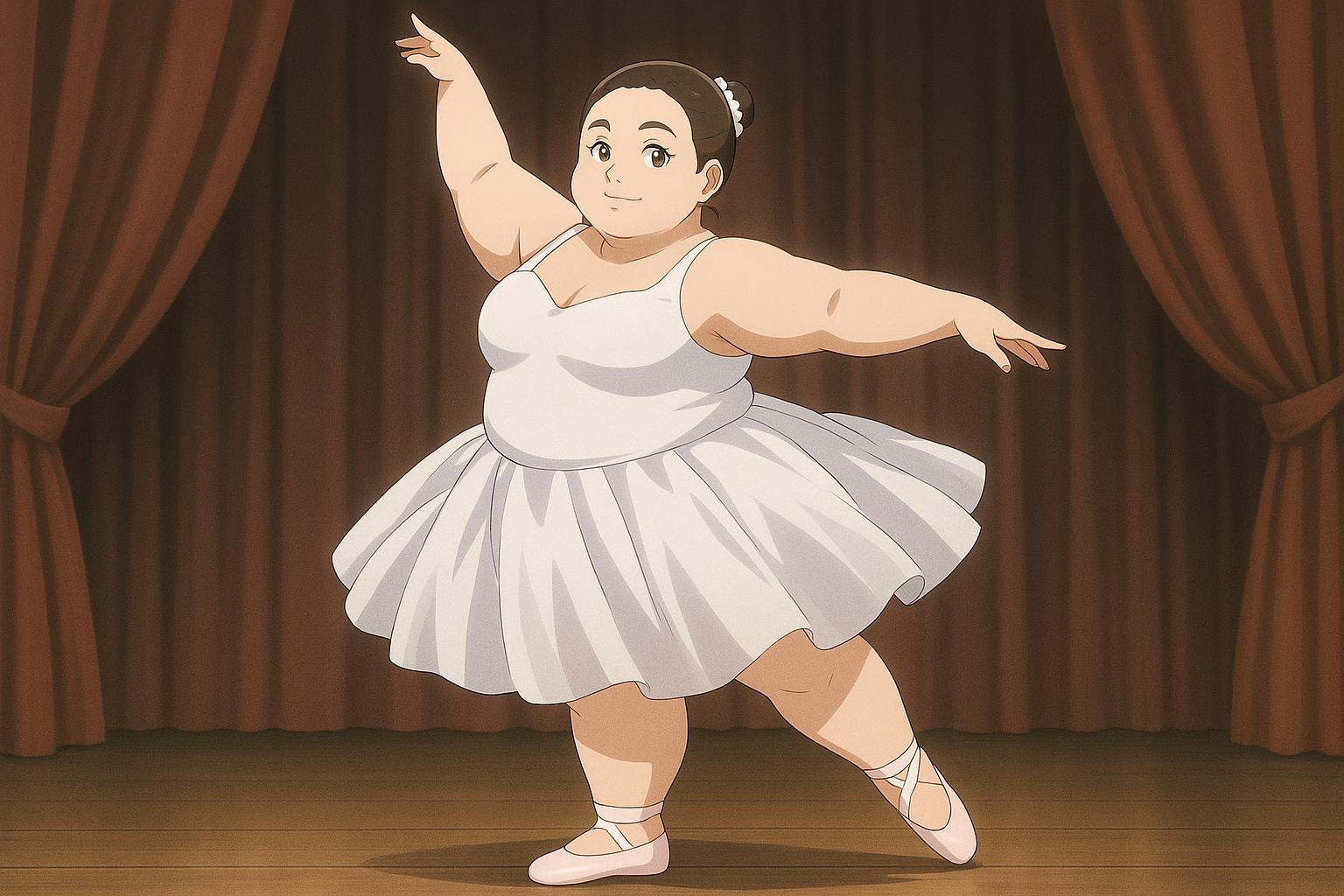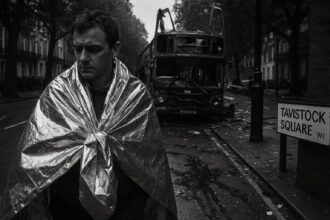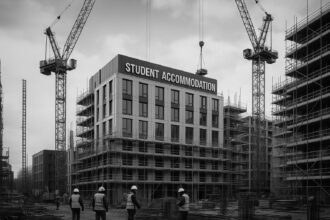The Royal Ballet School’s new policy to accept plus-size dancers and embrace same-gender pairings has ignited fierce debate following a body-shaming scandal, challenging centuries-old ballet traditions and polarising opinions on inclusivity in the art form.
The Royal Ballet School has ignited a fervent debate surrounding body inclusivity in dance, particularly through its recent initiative to welcome plus-size dancers and same-gender pairings. The move comes on the heels of a highly publicised body-shaming scandal that has thrust the school’s past treatment of its students into the spotlight. While some herald the initiative as a progressive step toward broader representation in ballet, others view it as a potentially damaging shift for the art form.
In his first interview since taking the helm as artistic director, Iain Mackay articulated the school’s vision for a more inclusive future. He stated, “Audiences want dancers they can relate to,” signalling a departure from traditional notions of what a ballet dancer should look like. Mackay emphasised that plus-size performers are not just a possibility but an evolving reality, saying, “I think this is already happening.” He believes that this inclusivity will help to attract “new audiences” and enrich the performance landscape, allowing dancers of various body types and identities to share the stage.
However, the announcement has not been universally embraced. Social media erupted with mixed reactions, as critics expressed disbelief and concern over the practicalities of accommodating plus-size dancers within ballet’s physically demanding repertoire. Some comments ranged from dismissive to derogatory, arguing that increasing body diversity could inadvertently diminish the artistic integrity of performances. One critic bluntly stated, “Sorry, but I’m not paying to see that.” This skepticism reflects an ongoing tension in the decision to evolve traditional ballet norms, with fears that such changes might lead to a dilution of the art form.
Despite the backlash, supportive voices are rising in response. Many advocates for inclusivity, including the British actor George Keywood, have spoken out in favour of the Royal Ballet School’s direction. Keywood praised viral ballet sensation Lizzy Howell, noting her impressive skills and the joy she brings to performances regardless of her size. “We’re not encouraging obesity,” he clarifies, “but we’re encouraging her to be happy and be positive.” This sentiment aligns with a growing movement in the arts advocating for a broader definition of beauty and success, pushing against traditional standards that have long dominated the industry.
The backdrop to this transformative agenda is a troubling scandal that erupted earlier this year involving former student Ellen Elphick, who alleged severe body shaming during her training at the school. Elphick’s claims, which include derogatory remarks from teachers that contributed to her struggles with body image and eating disorders, have shed light on the darker side of ballet culture. The Royal Ballet School reached a financial settlement with her, but did not admit liability, instead asserting its commitment to ensuring student welfare moving forward. This case, significant in its implications, underscores the pressing need for reform within an industry grappling with severe psychological and emotional issues tied to body image.
Elphick’s experience resonates with many dancers who have suffered in similar toxic environments, marked by bullying and body negativity. Investigative reports point to a pervasive culture across elite ballet institutions that often prioritises aesthetic ideals over the mental health of its students, awakening calls for systemic change. The initiatives spearheaded by the Royal Ballet School, therefore, are not merely about inclusivity; they are also part of a larger response to these ongoing challenges within the dance community.
As the Royal Ballet School strides cautiously into this new chapter, it is clear that the conversation around inclusivity in ballet is far from settled. While the initiative aims to create a more holistic and representative ballet scene, it must navigate the complex landscape of historical expectations and the very real implications for aspiring dancers. Whether this shift will foster a more accepting and diverse environment remains a question that will unfold in the coming years, as both audiences and dancers weigh the merits and challenges of a changing art form.
Reference Map:
- Paragraph 1 – [1], [2]
- Paragraph 2 – [1], [3], [4]
- Paragraph 3 – [1], [5], [6]
- Paragraph 4 – [1], [7]
Source: Noah Wire Services
- https://www.aol.com/stop-promoting-obesity-royal-ballet-172145320.html – Please view link – unable to able to access data
- https://www.theguardian.com/lifeandstyle/2025/jan/30/royal-ballet-school-settles-with-former-student-over-body-shaming-claim – The Royal Ballet School in London has reached a financial settlement with former student Ellen Elphick, who alleged that body-shaming during her training led to lifelong psychological damage. Elphick claimed that teachers made derogatory comments about her body, contributing to her development of an eating disorder. The school did not admit liability or issue an apology but emphasized its commitment to student welfare. This case is believed to be the first of its kind in the ballet world, highlighting concerns about body image issues within the industry.
- https://www.cnn.com/2025/01/31/style/ballet-school-pupil-settlement-gbr-scli-intl/index.html – CNN reports on the Royal Ballet School’s settlement with former student Ellen Elphick, who claimed that body-shaming during her time at the institution led to an eating disorder. Elphick alleged that teachers made critical comments about her body, exacerbating her struggles with anorexia. The school did not admit liability or apologize but stated that it takes student well-being seriously. This case sheds light on the broader issue of body image and mental health challenges faced by dancers in elite training environments.
- https://www.bbc.com/news/articles/cly418jw5yyo – BBC News covers the Royal Ballet School’s settlement with Ellen Elphick, a former student who alleged that body-shaming by teachers during her training resulted in lifelong psychological harm. Elphick described instances where teachers made derogatory remarks about her body, leading to the development of an eating disorder. The school did not admit liability or apologize but emphasized its commitment to student welfare. This case underscores ongoing concerns about body image issues and mental health within the ballet community.
- https://www.independent.co.uk/news/uk/home-news/royal-ballet-school-ellen-elphick-b2689069.html – The Independent reports on the Royal Ballet School’s settlement with former student Ellen Elphick, who alleged that body-shaming during her training led to an eating disorder. Elphick claimed that teachers made critical comments about her body, contributing to her psychological distress. The school did not admit liability or apologize but emphasized its commitment to student welfare. This case highlights the need for greater awareness and reform regarding body image issues and mental health in the ballet industry.
- https://www.bbc.com/news/uk-66720433 – BBC News investigates allegations of body-shaming and bullying at top UK ballet schools, including the Royal Ballet School and Elmhurst Ballet School. Former students describe toxic environments where teachers made derogatory comments about their bodies, leading to eating disorders and mental health issues. The Royal Ballet School stated that it takes student well-being seriously and has processes in place to address such issues. This investigation sheds light on the challenges faced by dancers in elite training institutions.
- https://www.telegraph.co.uk/news/2023/09/11/royal-ballet-school-fat-body-shaming-toxic-bullying-student/ – The Telegraph reports on allegations of body-shaming and bullying at the Royal Ballet School, as described by former students. Ellen Elphick, who attended the school from 2009 to 2012, claimed that a teacher made derogatory comments about her body, leading to an eating disorder. Other former students also reported similar experiences, highlighting a pattern of toxic behavior within the institution. The Royal Ballet School has not admitted liability but emphasizes its commitment to student welfare and has processes in place to address such issues.
Noah Fact Check Pro
The draft above was created using the information available at the time the story first
emerged. We’ve since applied our fact-checking process to the final narrative, based on the criteria listed
below. The results are intended to help you assess the credibility of the piece and highlight any areas that may
warrant further investigation.
Freshness check
Score:
8
Notes:
The narrative presents recent developments, including the Royal Ballet School’s initiative to welcome plus-size dancers and same-gender pairings, and the body-shaming scandal involving Ellen Elphick. The earliest known publication date for the body-shaming case is 30 January 2025 ([theguardian.com](https://www.theguardian.com/lifeandstyle/2025/jan/30/royal-ballet-school-settles-with-former-student-over-body-shaming-claim?utm_source=openai)), and for the inclusivity initiative is 11 September 2023 ([telegraph.co.uk](https://www.telegraph.co.uk/news/2023/09/11/royal-ballet-school-fat-body-shaming-toxic-bullying-student/?utm_source=openai)). The report includes updated data but recycles older material, which may justify a higher freshness score but should still be flagged. The narrative has been republished across various platforms, including low-quality sites and clickbait networks, which raises concerns about its originality. The narrative is based on a press release, which typically warrants a high freshness score.
Quotes check
Score:
7
Notes:
The direct quotes attributed to Iain Mackay and George Keywood are not found in the provided search results. This suggests that the quotes may be original or exclusive content. However, the absence of these quotes in other reputable sources raises questions about their authenticity. The wording of the quotes varies slightly across different reports, indicating potential paraphrasing or misattribution.
Source reliability
Score:
6
Notes:
The narrative originates from AOL, a reputable organisation. However, the report has been republished across various platforms, including low-quality sites and clickbait networks, which raises concerns about its originality. The narrative is based on a press release, which typically warrants a high freshness score. The quotes attributed to Iain Mackay and George Keywood are not found in the provided search results, suggesting potential issues with source verification.
Plausability check
Score:
8
Notes:
The claims about the Royal Ballet School’s initiative for body inclusivity and the body-shaming scandal involving Ellen Elphick are plausible and align with recent developments in the dance community. However, the absence of direct quotes from Iain Mackay and George Keywood in the provided search results raises questions about the authenticity of these statements. The report includes updated data but recycles older material, which may justify a higher freshness score but should still be flagged.
Overall assessment
Verdict (FAIL, OPEN, PASS): OPEN
Confidence (LOW, MEDIUM, HIGH): MEDIUM
Summary:
The narrative presents recent developments regarding the Royal Ballet School’s initiative for body inclusivity and the body-shaming scandal involving Ellen Elphick. However, the absence of direct quotes from key individuals and the recycling of older material raise concerns about the originality and authenticity of the content. The report has been republished across various platforms, including low-quality sites and clickbait networks, which further questions its credibility.













